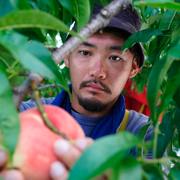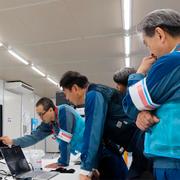
Japan nära att väcka världens största kärnkraftverk
Det lokala styret i japanska prefekturen Niigata är nära att godkänna att Kashiwazaki-Kariwa får återuppta verksamheten. Besked kan ges på fredag, enligt källor till Nikkei Asia.
Kärnkraftverket – som med sju reaktorer och en kapacitet på 8,2 gigawatt är världens största – har stått varit vilande sedan Fukushima-olyckan. Endast en av reaktorerna har dock godkänts för återstart.
Sedan olyckan 2011 har 14 kärnkraftsreaktorer återstartats, men merparten av dem ligger i västra Japan. Ny produktion vid Kashiwazaki-Kariwa är viktig för strömförsörjningen av Tokyoregionen.
bakgrund
Kashiwazaki-Kariwa
Wikipedia (en)
The Kashiwazaki-Kariwa Nuclear Power Plant (柏崎刈羽原子力発電所, Kashiwazaki-Kariwa genshiryoku-hatsudensho; Kashiwazaki-Kariwa NPP) is a large, modern (housing the world's first advanced boiling water reactor or ABWR) nuclear power plant on a 4.2-square-kilometer (1,000-acre) site. The campus spans the towns of Kashiwazaki and Kariwa in Niigata Prefecture, Japan, on the coast of the Sea of Japan, where it gets cooling water. The plant is owned and operated by Tokyo Electric Power Company (TEPCO), and it is the largest nuclear generating station in the world by net electrical power rating.
On 16 July 2007, the Chūetsu offshore earthquake took place, with its epicenter located only 19 km (12 mi) from the plant. The earthquake registered Mw 6.6, ranking it among the strongest earthquakes to occur in the immediate range of a nuclear power plant. This shook the plant beyond design basis and initiated an extended shutdown for inspection, which indicated that greater earthquake-proofing was needed before the operation could be resumed. The plant was completely shut down for 21 months following the earthquake. Unit 7 was restarted after seismic upgrades on 19 May 2009, followed later by units 1, 5, and 6. (Units 2, 3, and 4 were not restarted by the time of the March 2011 earthquake.)
The four restarted and operating units at the plant were not affected by the 11 March 2011 earthquake, but thereupon all units were shut down to carry out safety improvements. TEPCO regained permission to restart units 6 and 7 from the Nuclear Regulation Authority (NRA) in 2017, but throughout 2023, all units remained idle. In December 2023, the NRA finally approved the reloading of fuel at the plant, citing improvements in the safety management system. As of 2024, TEPCO is seeking permission from local authorities to restart the plant again.
Kashiwazaki-Kariwa
Omni är politiskt obundna och oberoende. Vi strävar efter att ge fler perspektiv på nyheterna. Har du frågor eller synpunkter kring vår rapportering? Kontakta redaktionen


